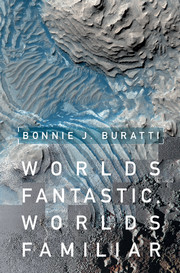Book contents
- Frontmatter
- Dedication
- Contents
- Acknowledgments
- Introduction
- 1 Mercury: The Hottest Little Place
- 2 Venus: An Even Hotter Place
- 3 Mars: The Abode of Life?
- 4 Asteroids and Comets: Sweat the Small Stuff
- 5 Galileo's Treasures: Worlds of Fire and Ice
- 6 Enceladus: An Active Iceball in Space
- 7 Titan: An Earth in Deep Freeze?
- 8 Iapetus and its Friends: The Weirdest “Planets” in the Solar System
- 9 Pluto: The First View of the “Third Zone”
- 10 Earths Above: The Search for Exoplanets and Life in the Universe
- Epilogue
- Glossary
- Index
- Plate section
6 - Enceladus: An Active Iceball in Space
Published online by Cambridge University Press: 24 March 2017
- Frontmatter
- Dedication
- Contents
- Acknowledgments
- Introduction
- 1 Mercury: The Hottest Little Place
- 2 Venus: An Even Hotter Place
- 3 Mars: The Abode of Life?
- 4 Asteroids and Comets: Sweat the Small Stuff
- 5 Galileo's Treasures: Worlds of Fire and Ice
- 6 Enceladus: An Active Iceball in Space
- 7 Titan: An Earth in Deep Freeze?
- 8 Iapetus and its Friends: The Weirdest “Planets” in the Solar System
- 9 Pluto: The First View of the “Third Zone”
- 10 Earths Above: The Search for Exoplanets and Life in the Universe
- Epilogue
- Glossary
- Index
- Plate section
Summary
At about 6:00 PM on a Friday afternoon in January 2005, I was sitting in the waning light of my JPL office and daydreaming about my activities for the weekend. I was startled by the sudden sharp ring of the phone, which I answered promptly – all the travel audit people and administrators wanting a favor done would have left. On the other end was Trina Ray (see Figure 6.1), a crack Cassini science planning engineer who was in charge of leading the plans for Cassini's close flybys of Titan. She was sitting in the office of Brian Paczkowski, another fabled JPL engineer who led the science planning office, and they were poring over an image of Enceladus, a small icy moon of Enceladus, that had been taken in November 2004.
“Bonnie, let me email you this image of Enceladus. We've been looking closely at an enhanced version of it. It looks like it has a plume,” said Trina.
“Okay, send it over,” I said.
I downloaded and looked at the image and sure enough, there appeared to be a tenuous, but well-formed, plume about the size of the crescent moon itself, which is a little over 300 miles from end to end (Figure 6.2). For comparison, our own Moon is 2,159 miles in diameter – you could fit 373 Enceladuses inside the Moon. Even though it was past 9:00 PM on the East Coast, I immediately called Paul Helfenstein of Cornell University, the Imaging Science Subsystem (ISS) representative of the group I was leading to plan all the Cassini targeted flybys of Enceladus and the other saturnian satellites.
“No, Bonnie, we are pretty sure that isn't a plume. We've looked at the image, and saw the ‘plume,’ but we think it's scattered light from the camera. But we're going to do some more tests to make sure.” I didn't know it at the time, but Paul immediately called other members of the imaging team to clue them in on our discovery. There was a disagreement on the imaging team at that point. Some members were certain that they had discovered activity on the tiny moon, while another faction led by Carolyn Porco, the Cassini Imaging Team leader, was adamant that the features their instrument had detected were not plumes.
- Type
- Chapter
- Information
- Worlds Fantastic, Worlds FamiliarA Guided Tour of the Solar System, pp. 118 - 136Publisher: Cambridge University PressPrint publication year: 2017



